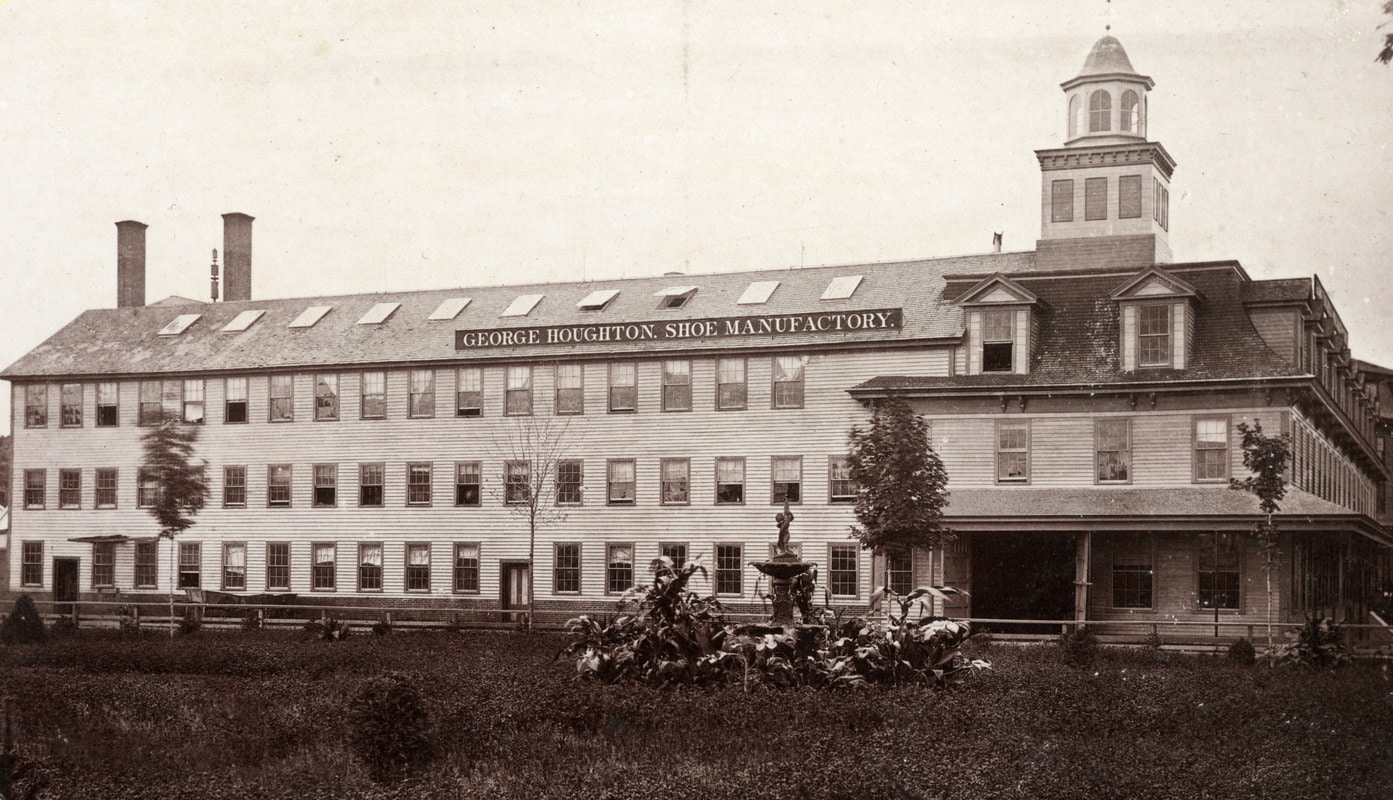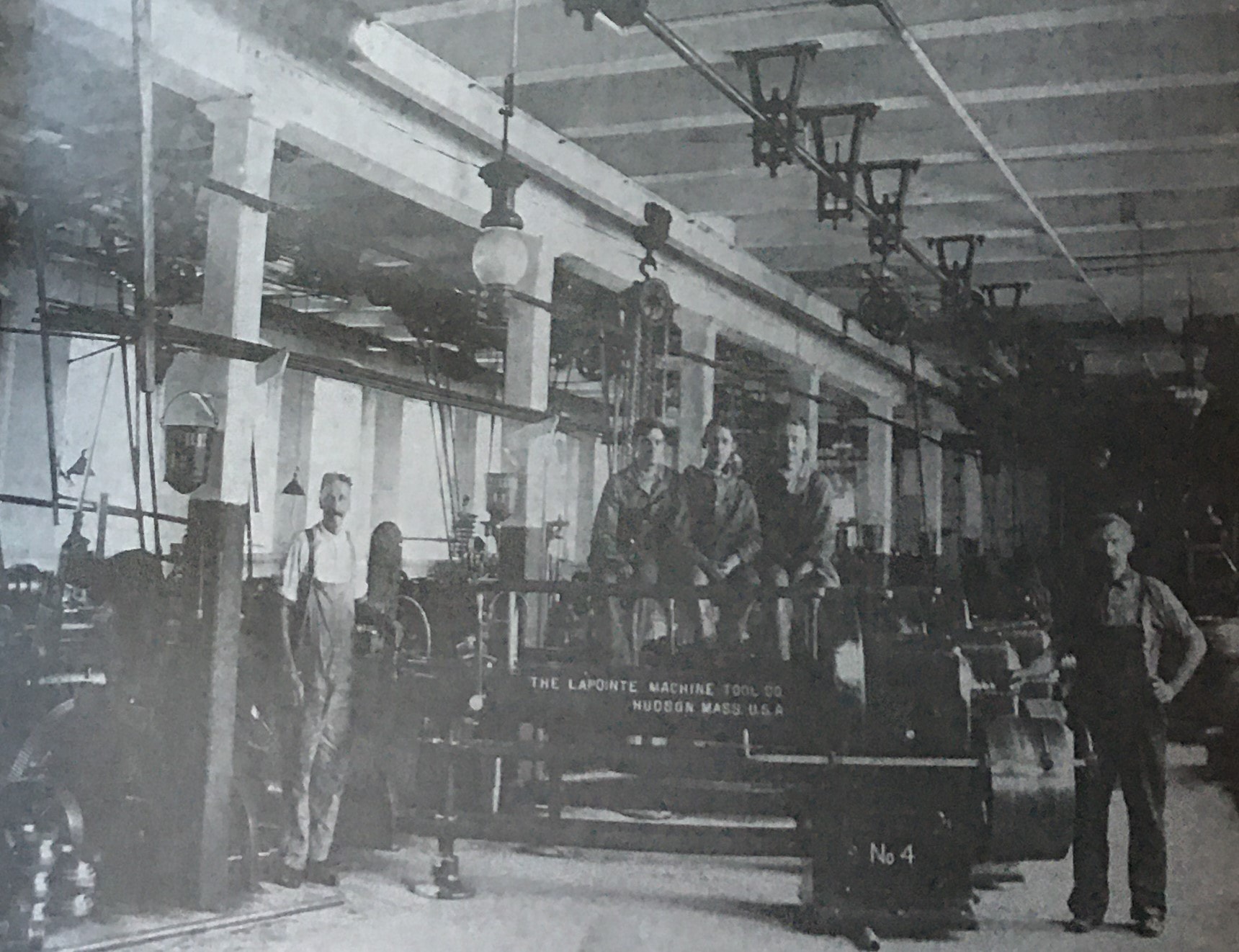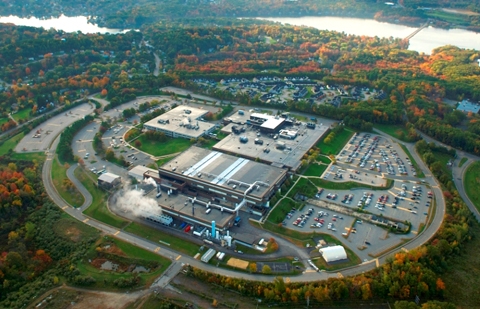
HUDSON – The town of Hudson has a rich industrial history; one that far predates it even being incorporated as a separate town.
As a part of Marlborough, the area now within Hudson saw its first commercial enterprise of note in 1698 with the arrival of a settler named John Barnes. Barnes built a grist mill on the north bank of the Assabet River, which was later joined by a saw mill that he added to also harness the river’s power.
Railroads fueled growth
But the meteoric rise of industry in the community that became known as Feltonville, named after its most prosperous resident, was in the mid-19th century.
With steam power and railroads arriving in the 1850s, the next decade saw a rapid industrial expansion. By 1860, 17 shoe factories or related businesses had sprung up, employing nearly 1,000 workers, many of them immigrants from Ireland or the French-speaking areas of Canada. The largest shoe factory was the George Houghton Shoe Manufactory, a long, imposing three-story building, which at its peak produced 850,00 pairs of shoes a year.
“Not only was it the largest shoe factory in the area, it was one of the largest in the country,” said David Bonazzoli, the Hudson Historical Society’s historian. “Houghton’s story is a true rags to riches and back tale. He was very good to his employees and always looked out for the best interests of the town.”
Many of the shoe factories were also powered by the Assabet River. By 1866, with the Civil War over and peace and prosperity back, residents petitioned to become a separate, incorporated town from Marlborough. It was named after Charles Hudson, a Feltonville native who served in both the Massachusetts legislature and the U.S. House of Representatives.
Over the next two decades, other types of industrial enterprises were started and grew in Hudson, including two woolen mills, a piano case manufacturer, and factories producing both elastic webbing and rubber coatings used to waterproof fabrics. The latter business was the Apsley Rubber Company (later bought by the tire company Firestone).
“At its peak Apsley employed up to 2,000 people, half of the people employed in Hudson,” noted Bonazzoli.
The Great Fire of 1894 was a major setback to the town’s businesses, with 40 buildings spread over five acres downtown destroyed. Rebuilding was completed in a year or so, with brick and stone replacing many of the wood-framed buildings that had been lost to the blaze.
Decline and diversification
During the first half of the 20th century, the shoe industry in Hudson went into a progressive decline, as it became harder and harder to compete with other parts of the country where wages were lower. One small, second-generation family shoe business, the Arrow Moccasin Company on Central Street, founded in 1951, still made its products up until about 2017.
One of the most prominent manufacturers in Hudson from the beginning of the 20th century to 1970 was The Lapointe Machine Tool Company. It was the world’s largest producer of broaching machines, used to smooth the surface of parts made by the automotive, aviation, and firearms industries. Its technology won numerous awards during World War II and is credited with saving American lives because it speeded up the production of guns needed for the war effort.

(Photo/Courtesy of the Hudson Historical Society)
“It seemed that nearly every Hudson family had a relative that worked at Lapointe’s,” said Bonazzoli. “These were good jobs, arguably the best place to work in Hudson. My grandfather retired from Lapointe’s, and my uncle, mother, aunt, and a first cousin worked there as well.”
The company, though it has been through several ownership changes since the 1970s, still operates in Hudson today, as the Lapointe Hudson Broach Company.
From the late 20th century and into the 21st century, one of Hudson’s most dominant industrial businesses and largest employer was a semiconductor manufacturing plant opened in the 1980s by Digital Equipment Corporation (DEC). It was sold to Intel Corporation in 1997. Intel shut down the manufacturing plant in 2015, but about 850 research and development employees remain at the Hudson facility.
Last year, a developer proposed to redevelop the former Intel property into a 1.28 million-square-foot distribution warehouse.
Reuse and revitalization
While Hudson’s industries have changed due to economic and technological developments, from that first grist mill to the multitude of shoe factories then in the digital age to computer parts, there is a continuity of sorts.
New businesses inhabit many old industrial buildings. Hudson Lock, a half-century-old manufacturer of locks, keys, key-cutting machines and other related products, operates out of the old Apsley Rubber Company building on Apsley Street.

(Photo/Courtesy of Intel Corporation)
Other repurposed industrial buildings include the Hills Brothers Shoe Company on Central Street, which houses Automotive Brake Rebuilders and Curley Plumbing Company, the Universal Boring Company at Main Street at Tower Street, which is now a gym, and various other small enterprises.
The Landing at the Hudson Mills on Broad Street, a century-old wool mill, is now home to dozens of small businesses, including a mix of retail, restaurant, and wellness ventures as well as the Hudson Historical Society.
“It was built in stages, beginning in 1903,” said Bonazzoli. “Henry T. G. Dyson, who lived to be 97, was the founder of the Hudson Worsted Company. The company did commercial wool combing.”
One new industry that has emerged in the past decade in Hudson is craft beer breweries. Medusa Brewing opened on Main Street in 2015, helping drive the revitalization of downtown as a drinking, dining, and entertainment destination. Medusa recently opened a second location at The Landing at the Hudson Mills. A second craft brewery, now Clover Road Brewing Company, opened farther down Main Street in 2018.











